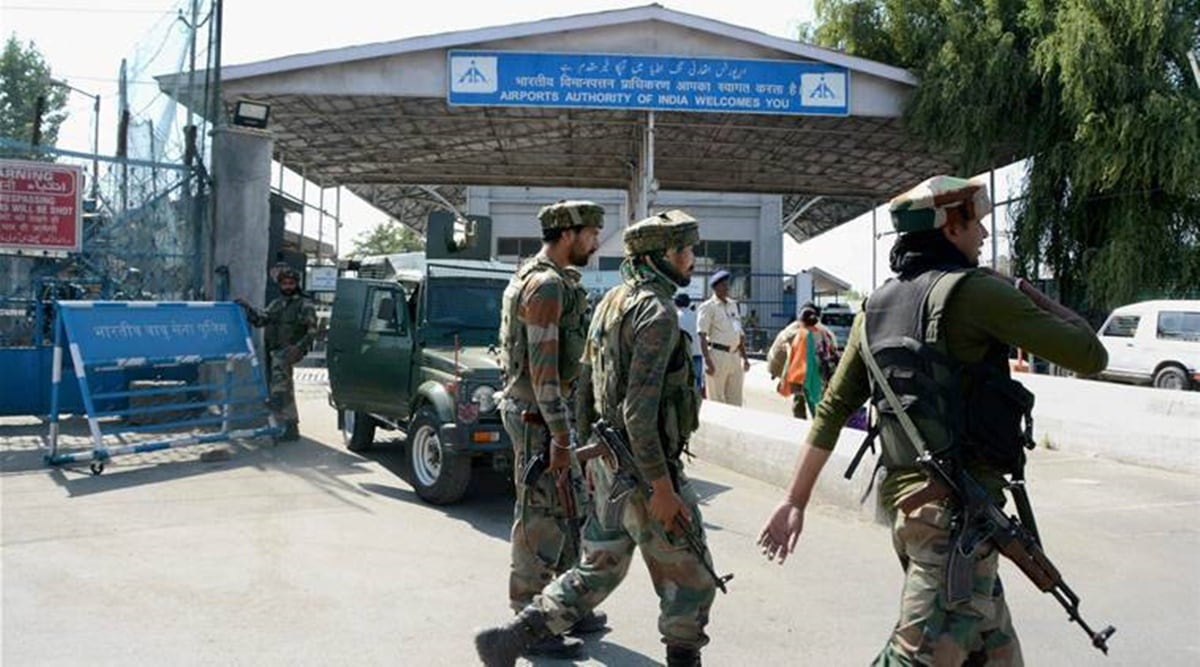 A police official said that a team of forensic experts and a bomb disposal squad were rushed to the spot. (Representational Photo)
A police official said that a team of forensic experts and a bomb disposal squad were rushed to the spot. (Representational Photo) In what could be the first such instance of a cross-border attack, security officials suspect that a drone was used to carry out Sunday’s blast at an IAF base in Jammu, sources said. The drone is likely to have been rigged with IEDs which exploded on impact, sources added.
The security establishment has been dealing with the threat for a while now, with several instances being recorded of drones dropping weapons, drugs and explosives in Jammu and Punjab regions in the past two-three years.
“Use of drones for surveillance has been there for many years. Even we use them. But in the past few years, we have seen increasing use of drones for dropping of weapons and explosives. We have seen them dropping assembled IEDs for future use. The Jammu attack is the first instance of drones being used directly for an attack. These quad-hexacopter drones can carry payloads in excess of 14-15 kg. That makes them quite a threat as so much explosive can cause quite extensive damage,” a security establishment officer said.
Just over a month ago, on May 14, the Border Security Force (BSF) had detected weapons dropped by a suspected Pakistan drone in Jammu. On specific information regarding dropping of arms and ammunition by a drone in the Samba border area, BSF troops carried out a search operation in Samba sector and recovered an item wrapped in yellow polythene from a field. One AK-47 assault rifle, one pistol, one magazine, 15 rounds for a 9 mm weapon, one wooden frame (used to attach the payload to the drone) and wrapping material were recovered approximately 250 metres inside Indian territory from the border.
On June 20 last year, the BSF even shot down one such drone. The drone, a hexacopter carrying arms and ammunition, was shot down at Rathua village in Kathua district’s Hiranagar sector along the Line of Control. This was months after Punjab Police claimed to have recovered weapons dropped by Pakistani drones.
According to BSF, a patrol party from Pansar border outpost (BOP) noticed a hexacopter drone flying at a height of 150-200 feet from Pakistan towards the Indian side at around 5.10 am. The drone fell nearly 250 metres on this side of the border after the BSF party fired several rounds at it.
Fitted with four batteries, a radio signal receiver and two GPS devices, it was 8 x 6.2ft in size and weighed 18kg. The drone was carrying a payload of nearly 5kg, including a US-made M4 semi-automatic carbine, two magazines, 60 rounds and seven Chinese grenades. The payload marked with the name of one Ali Bhai, who BSF suspected, must have been present within 1-1.5 km from the spot to receive the consignment.
The Jammu IAF base attack is by far one of the longest-known journeys made by a Pakistan drone. The base is about 14 km from the border. Sources said in the past, drones have dropped weapons as far as 12 km from the border.
For the past few years, the BSF has been pushing the Ministry of Home Affairs (MHA) to get latest technology to disable drones. The force began pushing it with greater vigour after the assassination of Iranian military officer Qasim Suleimani in a US drone attack in January 2020.
“Surveillance drone flights are very frequent. Sometimes, there are 10-15 sightings every day. But load carrying drones are a grave threat. In fact, that’s the future of warfare. Also, the assassination of Suleimani had shown that such threats are closer home than we think,” a BSF officer said.
Sources said currently the country neither has proper standard operating procedure for dealing with foreign drones nor any detailed guidelines for operation of domestic drones. “Some forces have bought drone-disabling technology, but they are area-specific. We want a wall across our border that can cut radio frequency and disable GPS, the two key technologies guiding a majority of drones these days,” the officer said.
He added that at present the only option that forces have was shooting down drones. But the same is easier said than done as it would require sniper fire and the drone to be within range. Also, sighting drones, specially during night, is not easy.
Sources said that work was in full swing in the Home Ministry to get the required technology, and technology from both India and abroad were being tested for this.
“However, as yet we haven’t been able to test a tech that is specific to our needs,” the officer said.
- The Indian Express website has been rated GREEN for its credibility and trustworthiness by Newsguard, a global service that rates news sources for their journalistic standards.

